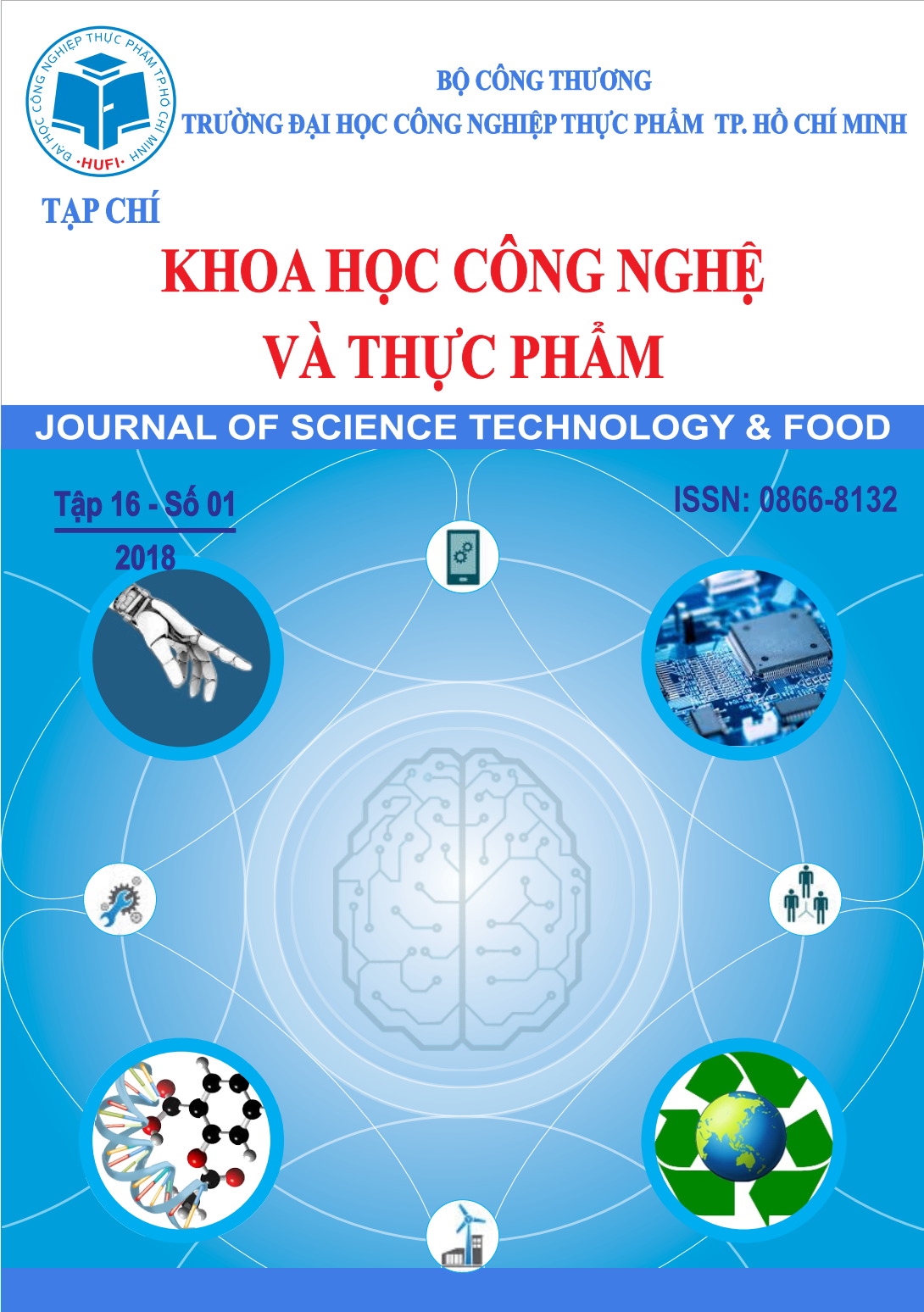OPTIMISATION OF MICROWAVE-ASSISTED EXTRACTION OF PHENOLIC COMPOUNDS FROM CASHEW NET COAT
Abstract
Polyphenol compounds in cashew nut testa were obtained by microwave assisted extraction (MAE) method. The aim of this research was to determine the optimal condition of extraction. The MAE conditions included two factors studied by empirical research were microwave power (W) and time (seconds), other factors were fixed based on results of earlier studies. The response was the total phenolic content (TPC, miligram GAE per gram of dry matter). The response surface methodology (RSM) based on central composite design (CCD) was used to design experiments. Empirical results showed that the relationship between TPC and MAE conditions fitted a quadratic empirical model with R2 of 0.977. In which, both factors had significant effects on TPC (p < 0.05), TPC also significantly influenced by interaction between these two factors. The optimal conditions were predicted by using the empirical model, TPC was maximised (193.83 mg GAE per gram of dry matter) at microwave power of 540 W and time of 84 seconds. The optimal condition was then empirically verified with 20 repeated samples, there was no significant difference (p > 0.05) between the predicted value and the experimental value (194.99 mg GAE per gram of dry matter). Free radical DPPH scavenging capacity of optimal extract (IC50) was 88.68 µg per mL, 6,69 times lower than vitamin C content (12.93 µg per mL).
Keywords: Optimization, microwave-assisted extraction, phenolic compounds, cashew nut coat, DPPH radical scavenging activity.

